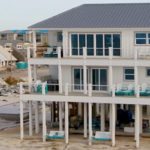
[Simpson Strong-Tie note: Shane Vilasineekul is the Simpson Strong-Tie Engineering Manager for the Northeast U.S. and one of our guest bloggers for the Structural Engineering Blog. For more on Shane, see his bio here.]
Are you finding it difficult to keep your fees competitive?
“Codes are becoming more complex.”
“Builders are demanding lower construction costs.”
“If I don’t allow this they will find an engineer who will.”
“Competition is stiffer.”
“New proprietary systems take too long to evaluate.”
“We have less time to do our job”
“Architects don’t give us enough to work with.”
“Other engineers are not doing it right.”
Working at Simpson Strong-Tie for 15 years, I have had the opportunity to speak with thousands of engineers and these are recurring themes. Some of these issues are way above my pay grade, but there may be something each of us can do to help keep our profession healthy.
A few years ago we had Susan Dowty from the California offices of S.K. Gosh speak at our SEA of Ohio conference. After her presentation, she stuck around to hear Steven Regoli from the Ohio Board of Building Standards. The gist of his presentation was that Ohio building officials don’t have the authority to reject sealed plans or even require calculations to be submitted unless there is clear evidence of a code violation. Midway through, a very lively discussion broke out between Susan and Steven about the responsibilities of plans examiners as they relate to structural design. On one side you have plans examiners who are licensed engineers and perform something akin to a peer review, and on the other side you have plans examiners with little engineering background that rely on the licensed engineer to ensure structural provisions are met. With some exceptions, the first view is held by many western states and the latter by many states in the South, Midwest and East Coast.
So how does this affect engineering fees? Well, when all it takes to collect a fee is a sealed set of structural plans, the temptation is there to cut corners in the design process and, in an increasingly competitive market, provide clients with a building that costs less to construct than one properly designed. I take pride in working in a profession that holds ethics in such high regard, but it only takes a few to give in and disrupt the market in a particular region. It seems like these “few” are gaining in numbers the last several years. Without proper checks and balances, this trend could continue.
So what can we do about it? I don’t think local government would be open to increasing the payroll for building departments to hire more engineers to review plans (building departments in Ohio saw some of the first and most severe cuts during the recent recession), but maybe we can help raise the bar for structural plan review. Steven Schaefer, the founder of Schaefer structural engineers in Cincinnati, decided years ago to take it upon himself to educate Ohio building departments on the fundamentals of structural engineering. He regularly presents at their meetings and has even created a guide to help plan reviewers look for proper load paths and lateral force-resisting systems. Next week he will be presenting four courses at their state conference and will be honored with an award for all his efforts over the years. We may not all be able to have the same impact, but most of us could spare a few hours each year to work with our local engineering association to reach out to building departments and offer training and support.
Leave a comment if you have some ideas on how to maintain our high standards, or better yet, share some successes you have seen in your area.







I am using retainpro software. They have not up dated to the new 2012 IBC or 2013 CBC yet as of today, 3-2-14. Do you know any retaining wall program which can use concrete and masonry for wall?